Measuring Success: How to Calculate Exhibitor ROI at DigiMarCon
Events such as DigiMarCon present businesses with a substantial opportunity to engage with prospective clients and display their offerings. It is imperative to comprehend the event’s influence on a company’s operations. This necessitates the evaluation of their success.
Measuring trade show success is critical for businesses aiming to optimize their event expenditures and achieve superior outcomes. The advent of digital marketing has elevated the significance of conferences like DigiMarCon. These gatherings are now indispensable for entities seeking to maintain a competitive edge.
Assessing exhibitor return on investment enables businesses to gauge the efficacy of their participation in events like DigiMarCon. This evaluation empowers companies to make strategic decisions regarding their future event investments.
The Critical Importance of Measuring Trade Show Success
In an era where digital channels are flooded with information, field marketing events like DigiMarCon emerge as a beacon of distinction. The imperative to measure trade show success cannot be overstated, as it serves as a cornerstone for evaluating the efficacy of such gatherings and guiding strategic decisions for future engagements.
Why ROI Matters for Digital Marketing Conferences
The significance of ROI in digital marketing conferences cannot be overstated. ROI analysis is indispensable for businesses to gauge the efficacy of their event participation, whether it pertains to lead generation, brand enhancement, or customer acquisition. This metric is instrumental in determining the true value derived from such investments.
The Investment Reality of Exhibiting at DigiMarCon
Participating in DigiMarCon demands a substantial commitment of resources, encompassing both financial and temporal investments. The costs, ranging from booth design and staffing to travel and promotional materials, escalate rapidly. Exhibitors must possess a precise comprehension of their total expenditure to accurately compute their ROI.
Setting the Foundation for Measurable Success
To gauge the success of their DigiMarCon participation, exhibitors must delineate clear, quantifiable objectives beforehand. This entails specifying key performance indicators (KPIs) such as lead generation, booth footfall, or engagement metrics. By formulating a pre-event measurement strategy, businesses can ensure they are tracking the pertinent data to evaluate their ROI with precision.
Understanding Exhibitor ROI Fundamentals
The process of calculating exhibitor ROI necessitates a profound comprehension of its underlying principles. To gauge the efficacy of their engagement at DigiMarCon, exhibitors must first grasp the essence of ROI within the realm of trade shows.
Defining Return on Investment for Trade Shows
Within the context of trade shows such as DigiMarCon, Return on Investment (ROI) signifies the financial gain or profit an exhibitor achieves relative to the expenses incurred for event participation. This metric is indispensable for businesses to assess the success of their exhibition endeavors.
Key components of trade show ROI include:
- Revenue generated from leads obtained at the event
- Cost savings from the event, such as reduced marketing expenses
- Intangible benefits like brand awareness and networking opportunities
The Basic ROI Formula for DigiMarCon Exhibitors
The fundamental ROI formula is uncomplicated: (Gain from Investment – Cost of Investment) / Cost of Investment * 100. For DigiMarCon exhibitors, this equates to: (Revenue generated from DigiMarCon – Total cost of participating in DigiMarCon) / Total cost of participating in DigiMarCon * 100.
To apply this formula effectively, exhibitors need to:
- Accurately track all costs associated with participating in DigiMarCon
- Measure the revenue generated from leads and sales resulting from the event
Qualitative vs. Quantitative Measurements
Distinguishing between qualitative and quantitative measurements is critical when calculating exhibitor ROI. Quantitative measurements encompass numerical data such as lead generation numbers, sales figures, and cost savings. In contrast, qualitative measurements involve non-numerical data like brand perception, customer satisfaction, and the quality of leads generated.
A balanced approach that considers both quantitative and qualitative measurements provides a holistic understanding of exhibitor ROI. By grasping these fundamentals, DigiMarCon exhibitors can more effectively evaluate their performance and make strategic decisions for future events.
Setting Strategic Objectives Before DigiMarCon
Before entering the vibrant atmosphere of DigiMarCon, exhibitors must establish a solid foundation for success. This necessitates a multifaceted strategy, commencing with the articulation of precise, attainable objectives.
Defining SMART Goals for Your Exhibition
To optimize trade show ROI, exhibitors must delineate SMART (Specific, Measurable, Achievable, Relevant, Time-bound) objectives for their DigiMarCon engagement. This might encompass objectives such as acquiring a predetermined number of leads, elevating brand recognition among a specific demographic, or introducing a novel product to industry stakeholders.
For instance, a SMART goal would be “to enhance brand recognition among our target audience by 20% within the next 6 months by presenting our new product at DigiMarCon.” This approach delineates a precise trajectory and quantifiable outcomes.
Aligning Exhibition Goals with Business Objectives
Ensuring that DigiMarCon goals resonate with overarching business objectives is imperative. This synergy guarantees that the investments in the trade show significantly contribute to the company’s overarching strategy.
For example, if a company aims to penetrate new markets, their DigiMarCon objectives might revolve around networking with prospective partners or identifying novel customer segments. This strategy leverages the trade show as a catalyst for achieving business expansion targets.
Creating a Pre-Event Measurement Plan
Developing a pre-event measurement plan is critical for assessing the efficacy of your DigiMarCon participation. This plan should detail the key performance indicators (KPIs) to gauge success, such as lead generation numbers, cost per lead, or booth engagement levels.
By predetermining these metrics, exhibitors can ensure readiness to collect requisite data during the event. This facilitates a more precise ROI evaluation and guides subsequent exhibition strategies.
Effective pre-event planning also entails identifying the tools and resources necessary for data capture and analysis. This might include lead capture technology, survey tools, or social media monitoring software.
Essential Metrics to Track at DigiMarCon
Accurate measurement of DigiMarCon’s impact necessitates the identification and tracking of critical metrics. These metrics are instrumental in helping exhibitors gauge their return on investment (ROI). To achieve this, a focus on several key performance indicators is imperative. These indicators provide valuable insights into exhibition performance.
Lead Generation Metrics
Lead generation stands as a critical component of trade show participation. To measure the effectiveness of lead generation at DigiMarCon, exhibitors must track several key metrics. These include:
- Number of leads collected: This encompasses both qualified and unqualified leads.
- Lead quality: Evaluating the lead’s conversion probability into customers.
- Cost per lead: Determining the expense of acquiring each lead.
By monitoring these metrics, exhibitors can assess the efficacy of their lead generation strategies. This evaluation enables them to make necessary adjustments for future events.
Booth Traffic and Engagement Analytics
Understanding booth traffic and engagement is essential for assessing exhibition performance. Key metrics to track include:
- Booth visitors: Counting the number of individuals visiting the booth.
- Dwell time: Measuring the duration of visitor engagement at the booth.
- Engagement levels: Evaluating the interaction between visitors and booth staff.
These metrics are instrumental in understanding the effectiveness of engagement with prospective customers. They also highlight areas for improvement.
Brand Awareness Measurements
Brand awareness is a critical aspect of exhibition success. To measure brand awareness, exhibitors can track several metrics. These include:
- Social media mentions: Monitoring social media for brand references during and after the event.
- Press coverage: Tracking media coverage of the brand’s participation in DigiMarCon.
- Brand recall surveys: Conducting surveys to assess attendees’ brand memory.
By measuring these metrics, exhibitors can gauge the impact of their participation on brand awareness. This evaluation enables them to refine their marketing strategies.
Financial Calculations for Exhibitor ROI
To fully grasp the financial implications of your investment in DigiMarCon, a detailed examination of both expenditures and revenue is imperative. This entails a thorough analysis of the costs incurred and the revenue generated from the event.
Total Investment Breakdown
Accurately determining your exhibitor ROI necessitates a meticulous breakdown of your total investment. This encompasses not only direct expenditures such as booth design and construction, travel, and staffing costs, but also indirect costs like marketing materials and pre-show promotional activities.
Key components of total investment include:
- Booth costs (design, construction, and rental)
- Travel and accommodation for staff
- Marketing materials and promotional expenses
- Staff training and event preparation
- Pre-show marketing campaigns
Revenue Attribution Methods
Accurately attributing revenue to your DigiMarCon participation is essential for ROI calculation. This process involves tracking leads generated during the event and converting them into sales or other desired actions post-event.
Effective revenue attribution methods include:
- Utilizing unique promo codes or QR codes to track leads
- Implementing a robust CRM system to monitor lead conversion
- Conducting post-event surveys to gauge the impact of the event on sales
Calculating Cost Per Lead and Cost Per Acquisition
Two critical metrics for evaluating the financial efficacy of your DigiMarCon participation are Cost Per Lead (CPL) and Cost Per Acquisition (CPA). CPL quantifies the cost of acquiring a single lead, whereas CPA quantifies the cost of acquiring a customer.
To calculate CPL and CPA:
- CPL = Total event costs / Number of leads generated
- CPA = Total event costs / Number of leads converted into customers
By comprehending and applying these financial metrics, businesses can more accurately assess their exhibitor ROI and make informed decisions for future events.
DigiMarCon-Specific ROI Strategies
To optimize ROI at DigiMarCon, enterprises must adopt bespoke strategies, leveraging the event’s distinctive digital marketing audience. By grasping the event’s unique characteristics and the demographics of its attendees, corporations can devise targeted methodologies to augment their exhibition results.
Leveraging DigiMarCon’s Digital Marketing Audience
DigiMarCon draws a highly specialized audience, dedicated to digital marketing. To capitalize on this, businesses should tailor their marketing messages and product demonstrations to align with this audience’s interests. This entails highlighting the most advanced digital marketing tools and methodologies, tailored to meet the attendees’ needs and preferences.
Exhibitors can also enhance their presence by engaging with the event’s digital platforms, such as social media and mobile apps. This strategy allows them to extend their reach beyond the physical booth, creating a more engaging experience for attendees and facilitating deeper connections.
Industry-Specific ROI Considerations
Diverse industries present unique challenges and requirements. At DigiMarCon, exhibitors must take these industry-specific factors into account when evaluating ROI. For example, a B2B software company might focus on lead generation and conversion rates, whereas a marketing agency might prioritize brand awareness and thought leadership.
By acknowledging these industry-specific nuances, businesses can refine their ROI metrics to better align with their objectives. This approach enables more precise success measurement and guides future exhibition tactics.
Competitive Analysis in the DigiMarCon Environment
Competitive analysis is essential at DigiMarCon, where businesses compete for attention in a saturated market. Exhibitors should monitor their competitors’ activities, examining their strengths and weaknesses to identify areas for differentiation.
Through rigorous competitive analysis, companies can refine their exhibition strategies, enhance their competitive advantage, and ultimately achieve a superior ROI at DigiMarCon.
Maximizing Trade Show Lead Generation
To achieve optimal trade show lead generation at DigiMarCon, a multifaceted strategy is imperative. This strategy must encompass pre-show marketing and on-site engagement. Exhibitors must employ a combination of tactics to drive booth traffic, qualify leads on-site, and efficiently capture lead information.
Pre-Show Marketing to Drive Booth Traffic
Pre-show marketing is a foundational element of a successful lead generation strategy at DigiMarCon. Exhibitors can utilize various marketing channels to promote their presence at the event.
- Email marketing campaigns to existing customers and prospects
- Social media promotions to create buzz around their booth
- Targeted advertising to reach prospective attendees
- Content marketing, such as blog posts or videos, highlighting their participation
By executing these pre-show marketing tactics, exhibitors can enhance booth visibility and attract more visitors.
On-Site Lead Qualification Strategies
Upon attendees’ arrival at the booth, it is imperative to have effective on-site lead qualification strategies in place. This necessitates training booth staff to engage with visitors, comprehend their needs, and qualify leads based on predefined criteria.
Key strategies include:
- Utilizing lead qualification frameworks to assess lead quality
- Posing targeted questions to grasp visitor needs and pain points
- Offering valuable information and resources to prospects
Effective Lead Capture Systems for DigiMarCon
Efficiently capturing lead information is critical for maximizing trade show lead generation. Exhibitors should employ effective lead capture systems that facilitate booth staff in collecting and managing lead data.
Some effective lead capture methods include:
- Utilizing mobile apps or tablets to scan badges or collect lead information
- Implementing QR code-based lead capture systems
- Employing traditional methods like business card collection, though less efficient
By integrating pre-show marketing, on-site lead qualification, and effective lead capture systems, DigiMarCon exhibitors can significantly enhance their trade show lead generation. This will ultimately improve their return on investment.
Post-Event Follow-Up and Conversion Tracking
Following DigiMarCon, the critical phase of post-event follow-up emerges, essential for optimizing ROI. This period is when the true value of participation is realized, as leads transition into customers. It is a time when the event’s impact is most palpable.
Effective Follow-up Strategies
Adopting a systematic follow-up approach is imperative for transforming leads into concrete business achievements. This necessitates:
- Personalized Communication: Customize your follow-up communications based on the interactions you had with leads at DigiMarCon.
- Timely Engagement: Engage with leads promptly, while the event remains vivid in their recollection.
- Multi-Channel Approach: Employ a diverse strategy, incorporating email, phone calls, and social media to interact with leads.
Measuring Conversion Rates
Accurate measurement of lead-to-customer conversion rates is indispensable to gauge the efficacy of your follow-up endeavors. This entails tracking:
- The quantity of leads generated at DigiMarCon.
- The number of leads successfully converted into customers.
- The revenue derived from these conversions.
Through the analysis of these metrics, you can enhance your follow-up tactics, aiming for enhanced future outcomes.
Timeline for ROI Realization
Grasping the timeline for ROI realization from DigiMarCon is fundamental for setting attainable goals and strategizing for future exhibitions. Typically, the ROI realization timeline can be segmented into:
- Short-term (0-3 months): Initial lead follow-up and conversion.
- Medium-term (3-6 months): Continued engagement and conversion of remaining leads.
- Long-term (6-12 months): Evaluation of the overall business growth and brand awareness impact.
By comprehending this timeline, businesses can more effectively strategize their exhibition endeavors, aiming to enhance their trade show performance.
Advanced Exhibition ROI Analysis Techniques
To fully grasp the effects of DigiMarCon participation, exhibitors must leverage advanced ROI analysis techniques. These sophisticated methodologies offer a detailed insight into event efficacy, facilitating informed decisions for subsequent exhibitions.
Advanced ROI analysis techniques provide a refined perspective on exhibition success, transcending basic metrics to reveal profound insights into customer value, relationship cultivation, and industry stature.
Measuring Customer Lifetime Value from Event Leads
One essential facet of advanced ROI analysis is the evaluation of Customer Lifetime Value (CLV) from event leads. CLV signifies the cumulative value a customer contributes to a business throughout their tenure. By monitoring CLV, exhibitors can:
- Identify high-value customers acquired through DigiMarCon
- Assess the enduring influence of event-generated leads
- Refine marketing tactics to attract analogous high-value customers
To compute CLV, the formula CLV = (Average Order Value x Purchase Frequency) / Customer Acquisition Cost is employed. Applying this formula to leads generated from DigiMarCon enables exhibitors to ascertain the genuine ROI of their participation.
Relationship Building ROI Assessment
Relationship cultivation is a vital element of exhibition triumph, yet gauging its ROI poses a challenge. Advanced analysis methodologies empower exhibitors to quantify the worth of relationships forged at DigiMarCon. This encompasses evaluating:
- The quantity and caliber of connections established during the event
- The degree of engagement and interaction with prospective customers
- The resultant business prospects and partnerships
By scrutinizing these elements, enterprises can ascertain the ROI of their relationship-building endeavors and enhance their strategies for forthcoming events.
Industry Positioning and Thought Leadership Benefits
Participation in DigiMarCon also affords opportunities for industry positioning and thought leadership. Advanced ROI analysis methodologies enable businesses to quantify these intangible advantages by examining:
- Brand visibility and awareness among the target demographic
- The influence of thought leadership content on industry discourse
- The perceived value of the enterprise within the industry
By assessing these metrics, exhibitors can acquire a more nuanced comprehension of their DigiMarCon ROI, guiding their decisions regarding future participation.
Case Studies: Successful Exhibitor ROI at Previous DigiMarCon Events
An examination of past DigiMarCon events uncovers critical insights into successful exhibitor marketing strategies. By dissecting the experiences of diverse businesses, we uncover the essential elements that contribute to substantial trade show ROI.
B2B Software Company Success Story
A preeminent B2B software entity achieved remarkable success at DigiMarCon through a multifaceted marketing strategy. Initially, they crafted compelling content for social media platforms to attract visitors to their booth.
- Employed targeted social media advertisements to engage prospective clients
- Presented exclusive software demos at the event
- Acquired high-quality leads through interactive booth experiences
Consequently, they reported a 30% increase in qualified leads compared to the preceding year’s event. Their strategic pre-event marketing and on-site engagement significantly enhanced their trade show ROI.
Marketing Agency Exhibition Results
A renowned marketing agency also demonstrated impressive results at DigiMarCon. They focused on demonstrating their expertise through thought leadership content and live presentations.
- Hosted a well-attended webinar on the latest digital marketing trends
- Provided one-on-one consultations to attendees, solidifying their industry expertise
- Leveraged the event to launch a new service, generating substantial interest
The agency witnessed a 25% boost in brand awareness among DigiMarCon attendees, leading to new business opportunities and an enhanced ROI.
Key Takeaways from High-Performing Exhibitors
By analyzing the strategies of successful exhibitors at DigiMarCon, businesses can glean valuable insights into augmenting their trade show profitability. Key takeaways include:
- The significance of pre-event marketing in driving booth traffic
- The value of engaging, interactive experiences for lead generation
- The necessity of aligning exhibition goals with overall business objectives
By integrating these lessons, companies can develop more effective exhibition strategies, ultimately maximizing their trade show ROI.
Overcoming Common Exhibition ROI Measurement Challenges
To fully grasp the efficacy of their exhibition endeavors, enterprises must navigate through prevalent ROI measurement hurdles. The investment in participating in events such as DigiMarCon is substantial, necessitating precise ROI assessment to validate such expenditures. This endeavor encompasses various intricacies, demanding meticulous examination.
Attribution Problems and Solutions
Attribution stands as a primary obstacle in gauging exhibition ROI. It is often challenging to directly link leads and sales to the event, given the involvement of multiple marketing channels. To mitigate this, enterprises can adopt multi-touch attribution models, which trace the customer’s journey across diverse touchpoints, encompassing the exhibition.
Utilizing unique promo codes or tracking URLs for the event serves as another viable solution. This method enables businesses to monitor the utilization of these codes or URLs, furnishing a more defined understanding of the event’s influence.
Dealing with Long Sales Cycles
Long sales cycles represent another formidable challenge in ROI measurement. The duration of the sales process can extend significantly, with leads potentially converting into customers months or even years post-event. To address this, enterprises should establish long-term tracking and follow-up processes to monitor lead progression over time.
Employing customer relationship management (CRM) software facilitates the tracking of interactions with leads and customers, yielding invaluable insights into the sales cycle and lead conversion.
Balancing Quantitative and Qualitative Outcomes
Exhibition ROI extends beyond mere quantitative metrics; qualitative outcomes, such as brand awareness and customer relationships, are equally significant. Enterprises must find equilibrium between quantifiable returns, like leads and sales, and the intangible benefits, including networking opportunities and brand visibility.
To achieve this equilibrium, companies can leverage surveys and feedback forms to assess the qualitative impact of their exhibition participation. Such methods offer insights into attendee perceptions of the brand and the value derived from interactions with the company at the event.
Conclusion: Transforming DigiMarCon Participation into Measurable Business Success
The process of measuring and maximizing exhibitor ROI at DigiMarCon necessitates a holistic strategy, encompassing meticulous planning, precise execution, and exhaustive analysis. Recognizing the criticality of trade show ROI and establishing definitive objectives is imperative. This enables businesses to convert their engagement in DigiMarCon into quantifiable business triumph.
For this transformation, enterprises must monitor critical metrics, utilize sophisticated ROI analysis methodologies, and implement the strategies discussed in this article to enhance their trade show ROI. Such actions guarantee that the investment in DigiMarCon results in a substantial return, propelling business expansion and revenue.
Assessing trade show success transcends mere financial metrics; it demands a profound comprehension of how to harness DigiMarCon’s digital marketing audience and industry-specific ROI considerations. By adopting a data-centric approach to exhibitor ROI, businesses can make enlightened decisions and refine their future trade show participation.
By adhering to these principles, corporations can unlock DigiMarCon’s full potency, securing a considerable return on their investment. This maximizes their trade show ROI and propels long-term business success.
FAQ
What is the importance of measuring exhibitor ROI at DigiMarCon?
At DigiMarCon, the measurement of exhibitor ROI is imperative for businesses to gauge the efficacy of their event investments. This knowledge enables them to make strategic decisions regarding future participation and to optimize their return on investment.
How do I define ROI in the context of trade shows like DigiMarCon?
In the realm of trade shows, such as DigiMarCon, ROI encompasses the financial gains a business reaps from event participation. This includes revenue, leads, and enhanced brand visibility.
What are the essential metrics to track at DigiMarCon to measure exhibitor ROI?
Key metrics for ROI assessment at DigiMarCon include lead generation, booth engagement, brand awareness, total investment, and revenue attribution.
How can I maximize trade show lead generation at DigiMarCon?
To enhance lead generation at DigiMarCon, businesses should employ pre-event marketing, implement on-site lead qualification, and utilize advanced lead capture systems.
What are some common challenges in measuring exhibition ROI, and how can they be overcome?
Challenges in measuring exhibition ROI include attribution difficulties, long sales cycles, and the need to balance quantitative and qualitative data. These can be addressed through the adoption of suitable attribution models, leveraging data analytics, and setting precise objectives.
How can I measure the ROI of relationship building efforts at DigiMarCon?
Assessing the ROI of relationship building at DigiMarCon involves evaluating the long-term value of established connections. This includes future collaborations, referrals, and business opportunities.
What is the significance of customer lifetime value in exhibition ROI analysis?
Customer lifetime value is a critical component in exhibition ROI analysis. It reveals the long-term revenue streams from leads generated at the event.
How can I calculate the cost per lead and cost per acquisition at DigiMarCon?
To determine cost per lead and cost per acquisition at DigiMarCon, divide the total investment by the number of leads and customers acquired, respectively.
What are some industry-specific ROI considerations for DigiMarCon?
Industry-specific ROI considerations at DigiMarCon include understanding the unique digital marketing audience, leveraging specialized marketing strategies, and benchmarking against peer industries.
How can I ensure effective post-event follow-up and conversion tracking after DigiMarCon?
Effective post-event follow-up at DigiMarCon involves a structured follow-up process, measuring lead-to-customer conversion rates, and understanding ROI realization timelines.
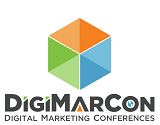


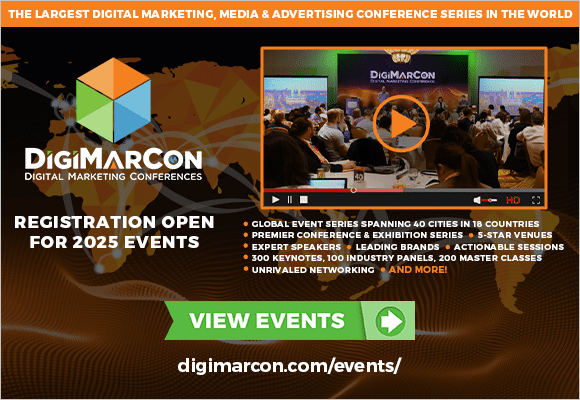







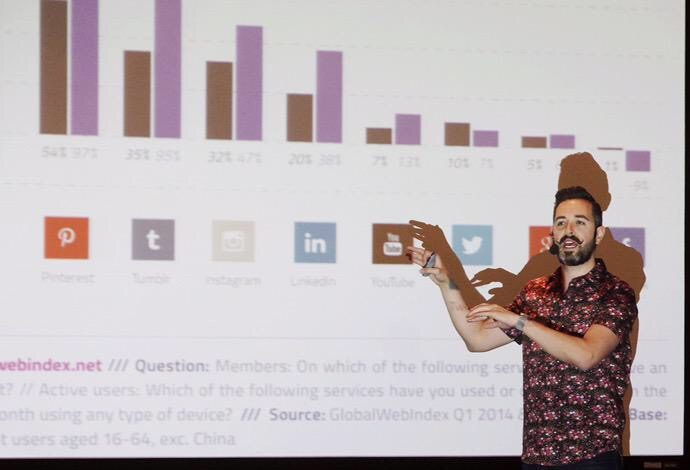
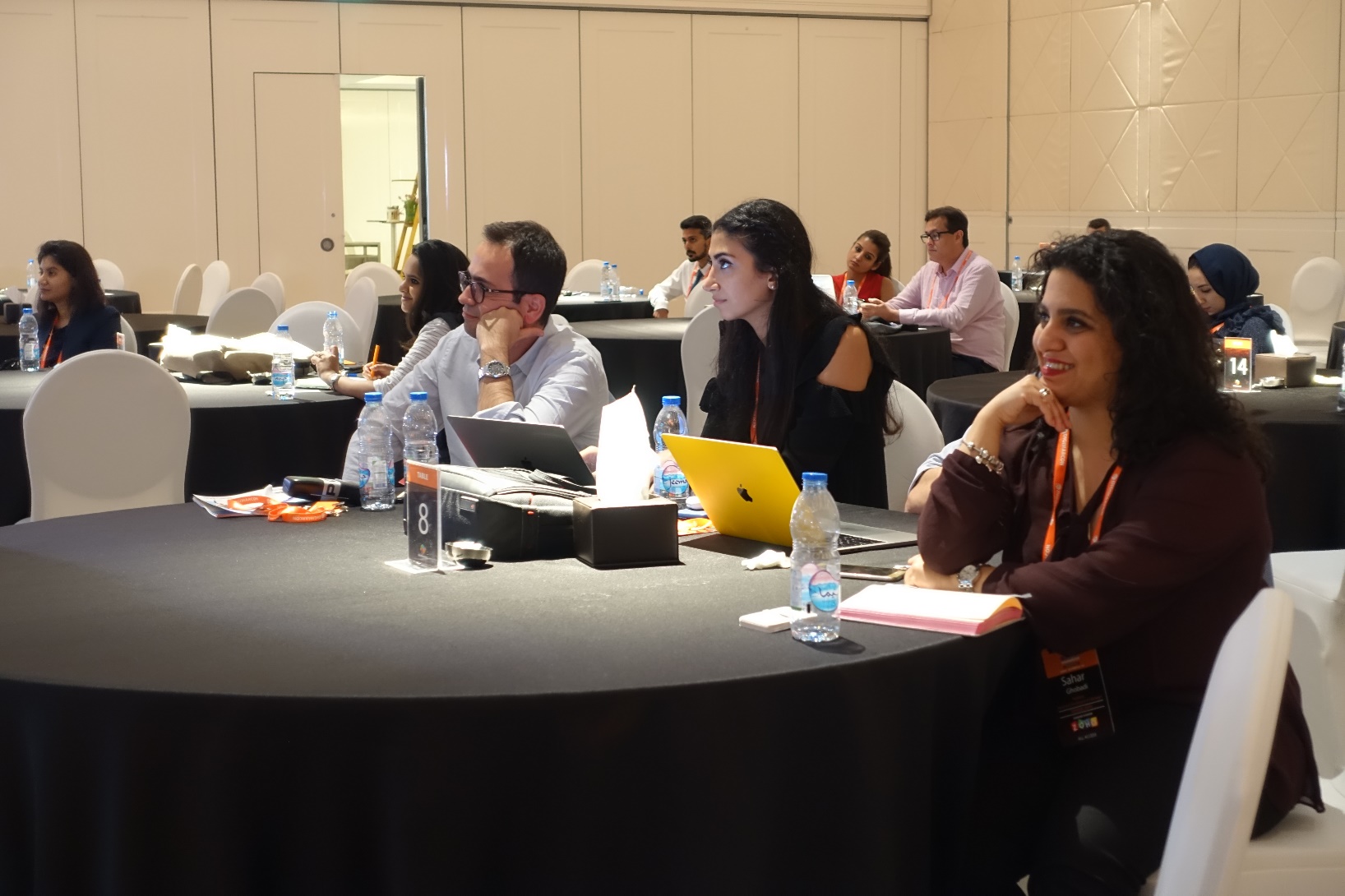

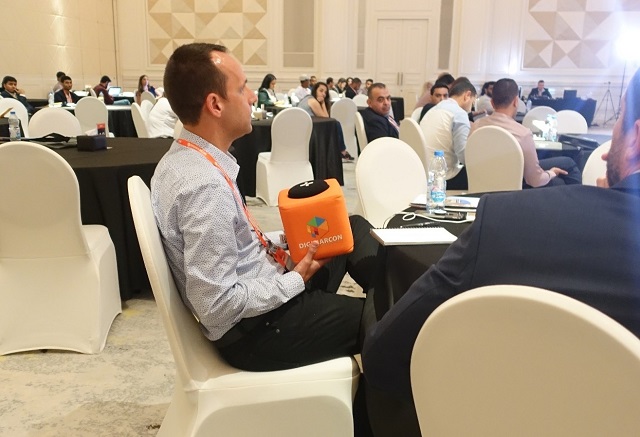

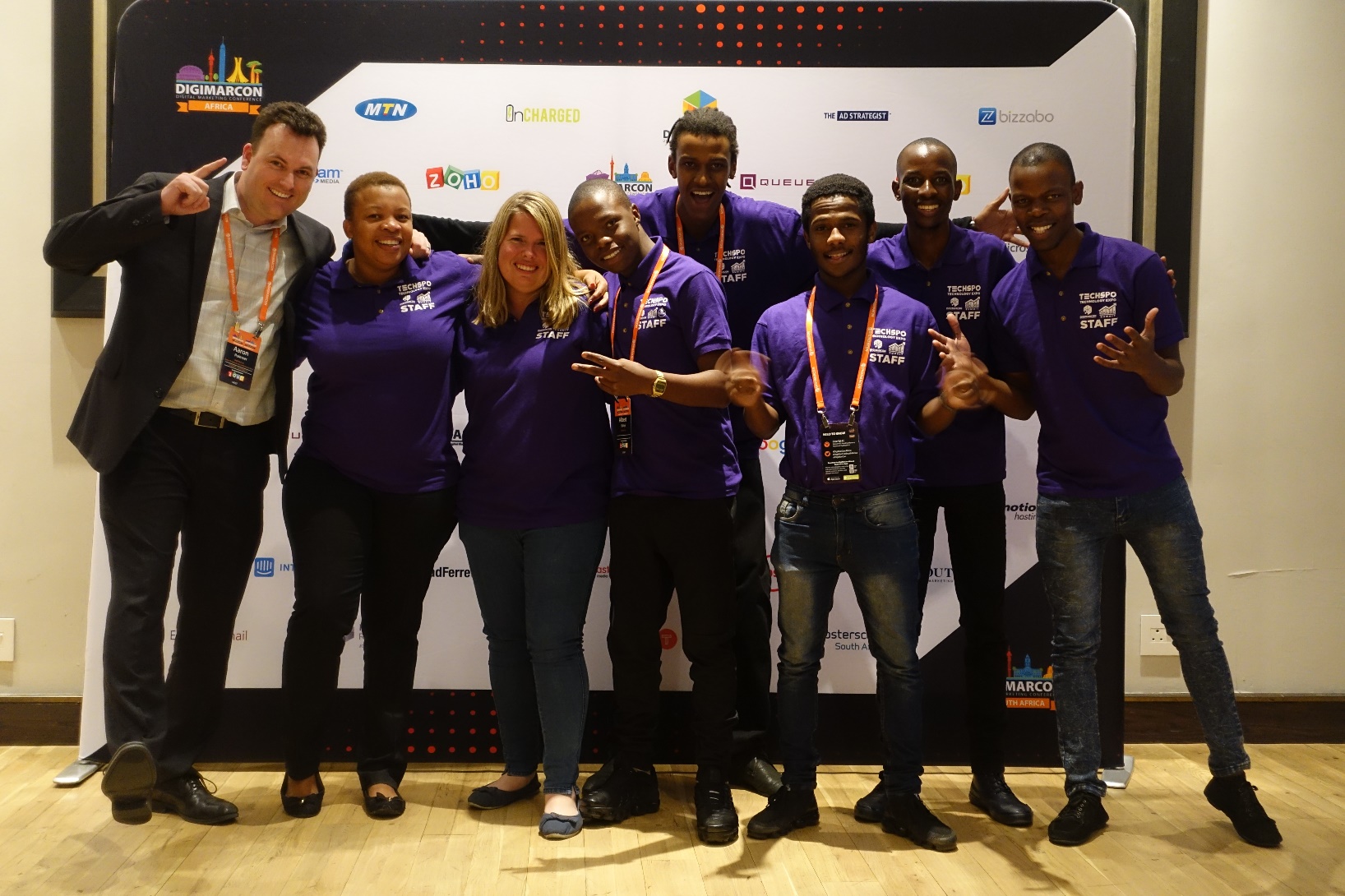




















No comments